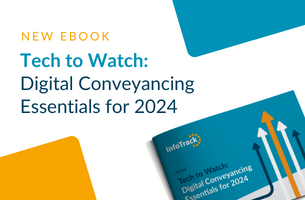Posted by Nicola Jones, director of Legal Futures Associate Athena Professional

Jones: self-management and working with others are now recognised aspects of competence for solicitors
Halloween 2015 will mark the beginning of the end of the hours-based CPD year. From 1 November 2016 it will be mandatory to move to the SRA’s new CPD model, whereby individuals make a declaration of competence to practise when applying for their practising certificate. Employers will share responsibility for ensuring people are, indeed, competent.
The framework indicates the types of capabilities a competent solicitor ought to be able to demonstrate. It is not definitive. The SRA will not be pro-active in enforcing the regulations.
There are two ways of responding to this. It could be seen as a green light to do nothing, or it could be interpreted as freeing up law firms to use learning and development to equip people to be more effective at work. Either way, the comfort blanket of CPD hours has gone. If you have not done so already, this is the time to make an informed decision about what that means for your business.
Compliance with the competence statement
A competent solicitor (as defined in the competence statement) will be one who can meet the requirement of principle 5 of the SRA Handbook, to provide a “proper standard of service”. The indicative behaviours are described in the statement.
It gives four key areas of activity a competent solicitor should address: self-management, management of others, professionalism and ethics, and technical knowledge.
The SRA’s toolkit on CPD states that “meeting the competences set out in the competence statement forms an integral part of the requirement to provide a proper standard of service”. However, there are no mandatory criteria in the statement. Competence in all of the elements is not expected.
‘Compliance’, in this context, means being able to evidence use of the statement as a guide to identify and address learning needs. It is to be used to assess whether the individual, and ultimately the whole firm, is in a position to provide a proper standard of service.
What does “being competent to practise” actually mean?
Don’t get distracted by the idea of ‘competence’, which is hardly flattering. Defining what good looks like is worthwhile. In order to recruit and develop people effectively, it is vital to know what values, behaviour and expertise your business needs. It all comes back to strategy: where do you want the business to be and what do you need to do to get there?
Lawyers tend to think that colleagues should ‘do the right thing’ and can be surprised when they don’t. The skills they use to challenge and support clients seem to evaporate when dealing with people in their own work-place.
The changes in the CPD regulations mean that self-management and working with others are now recognised aspects of competence for solicitors. Not everyone will be good at them, but it does provide a way of challenging the isolated, door-shut-and-don’t-speak-to-me attitudes which some lawyers display.
Using a competency-based approach
This is best explained by an example. It might be thought desirable for a lawyer to possess ‘intellectual flexibility and technical knowledge’. A competency-based approach would put some detail behind that statement to describe the desired behaviours, such as:
- Demonstrates intellectual curiosity in a variety of ways;
- Shares relevant information with colleagues across departments;
- Quickly and accurately grasps key issues in any legal problem; and
- Reflects and develops own thinking including discussion and debate with colleagues.
Getting under the skin of work activities in this way gives line managers something to go at when they are trying to decide if someone is good at them or not. It also gives the individual learner a clear indication of what they need to do.
For some law firms, this kind of approach is well established. For others, however, it opens a Pandora’s Box of issues, including accountability for behaviour as well as financial output. Feathers can be ruffed when focus shifts from fees to the wider context of what the business needs to succeed in the long term.
Spotlight on the dreaded appraisal
Performance management is about much more than an annual chat. In reality many lawyers who are required to manage appraisals are too busy or lack the skills to make them really effective.
Using competencies helps to drive the conversation towards real evidence of performance. Doing it well requires the capacity to offer constructive challenge, hold people to account and give meaningful feedback, on good as well as poor performance.
Demonstrating compliance with a competency-based approach
Gathering evidence is not an alien concept for lawyers. Just in case the SRA does, one day, have cause to come looking for evidence of competence, there needs to be an audit trail demonstrating compliance. The SRA will want to see:
- that learning needs have been identified,
- the need has been acted upon, and
- the learning has been followed up by some thought about how it has been applied and what learning need remains.
Capturing that information in a useful, but not burdensome way will involve everyone understanding their personal responsibility for demonstrating competence. That responsibility is shared by the business, so there needs to be support and structure. Ultimately though, the individual learner has to account for their own learning.
What’s in it for the business?
There is a strand of thought which goes something like this: ‘I didn’t come into law to work with people.’ Maybe so, but in an age when we are all well aware that technical expertise is a given, we are all focusing on differentiating factors in client service, the ability to identify and develop new ideas and to compete successfully.
All these ideas and more depend on being able to create a place of work in which people are able to work at their best. Letting go of the CPD hour creates an opportunity to think widely and deeply about what is needed to create a successful legal business.











Chartered Legal Executives have been doing CPD like this for 2 years (and we did not miss a year) I find it easier more relevant and more useful. It is also cheaper for employers.